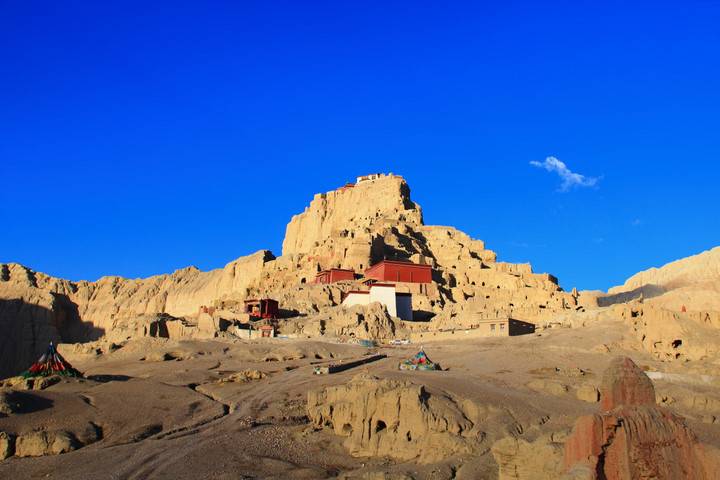The Ruins of the Guge are a testament to the ancient Guge kingdom that once flourished in the far west of Tibet. This archaeological site reveals a civilization that thrived for centuries before mysteriously disappearing. The ruins are located on a high and dry plateau, offering a glimpse into a sophisticated culture with a unique blend of Buddhism and indigenous beliefs. The remnants of palaces, temples, and houses, along with intricate murals and statues, provide valuable insights into the artistic and spiritual life of the Guge people.
Guge Kingdom
The Guge Kingdom, an ancient civilization that flourished in the far western reaches of Tibet, presents a fascinating chapter in the annals of Asian history. Established in the 10th century AD, following the collapse of the Tibetan Empire, Guge was a beacon of Buddhism and culture amidst the harsh landscapes of the Ngari region. Its timeline spans over seven centuries, during which it played a pivotal role in the preservation and propagation of Buddhism in the region, until its mysterious decline in the 17th century AD.
Guge’s inception is closely tied to the fragmentation of the Tibetan Empire. In the chaos that ensued post-empire, a descendant of the Tibetan royal lineage, Nyima Gon, founded the kingdom. He and his successors embarked on a mission to revive Buddhism, which had waned in the aftermath of the empire’s collapse. This led to the construction of the magnificent Tholing Monastery in 997 AD, marking the beginning of a Buddhist renaissance in western Tibet. The monastery attracted scholars, artists, and monks from across the Himalayas, turning Guge into a religious and cultural hub.
The kingdom’s religion, Buddhism, was not just a faith but the cornerstone of its identity and governance. Guge’s rulers were devout patrons of Buddhism, investing in the construction of temples and monasteries, and inviting scholars to translate Buddhist texts. This religious fervor facilitated the kingdom’s role in the second diffusion of Buddhism in Tibet, significantly influencing the spiritual landscape of the region.
Social and daily life in Guge was intricately linked to Buddhism. The society was stratified, with the king and his family at the apex, followed by the clergy, and then commoners, including traders, artisans, and farmers. The common people led a life deeply imbued with religious practices, participating in festivals, pilgrimages, and rituals. Agriculture, animal husbandry, and trade with neighboring regions were the mainstays of their economy.
The kingdom was ruled by a succession of kings, who were not only temporal rulers but also spiritual patrons. The lineage of Guge’s kings is noted for its commitment to Buddhism and the arts. Among the most notable rulers was Yeshe-Ö, who played a crucial role in the revival of Buddhism in Tibet. His efforts to invite Atiśa, a renowned Buddhist scholar, to Guge in the 11th century AD were pivotal in the spread of Buddhism throughout Tibet.
Guge’s strategic location on the ancient trade routes also made it a target for invasions. The most devastating of these was the invasion by the Ladakhi forces in the 17th century AD, which led to the kingdom’s downfall. The exact reasons for Guge’s decline are still debated among historians, but the invasion significantly contributed to its collapse, leaving behind ruins that whisper tales of its former glory.
The remnants of the Guge Kingdom, particularly the ruins of Tsaparang and Tholing, offer a glimpse into its architectural and artistic achievements. These sites, adorned with intricate murals and sculptures, stand as a testament to the kingdom’s sophisticated culture and its role in the Himalayan art history.
The Guge Kingdom’s legacy is that of a civilization that thrived in isolation, nurturing a unique culture and religious tradition. Its contributions to the spread of Buddhism in Tibet and the Himalayan region are its most enduring legacy, making it a subject of enduring fascination for historians and scholars.

